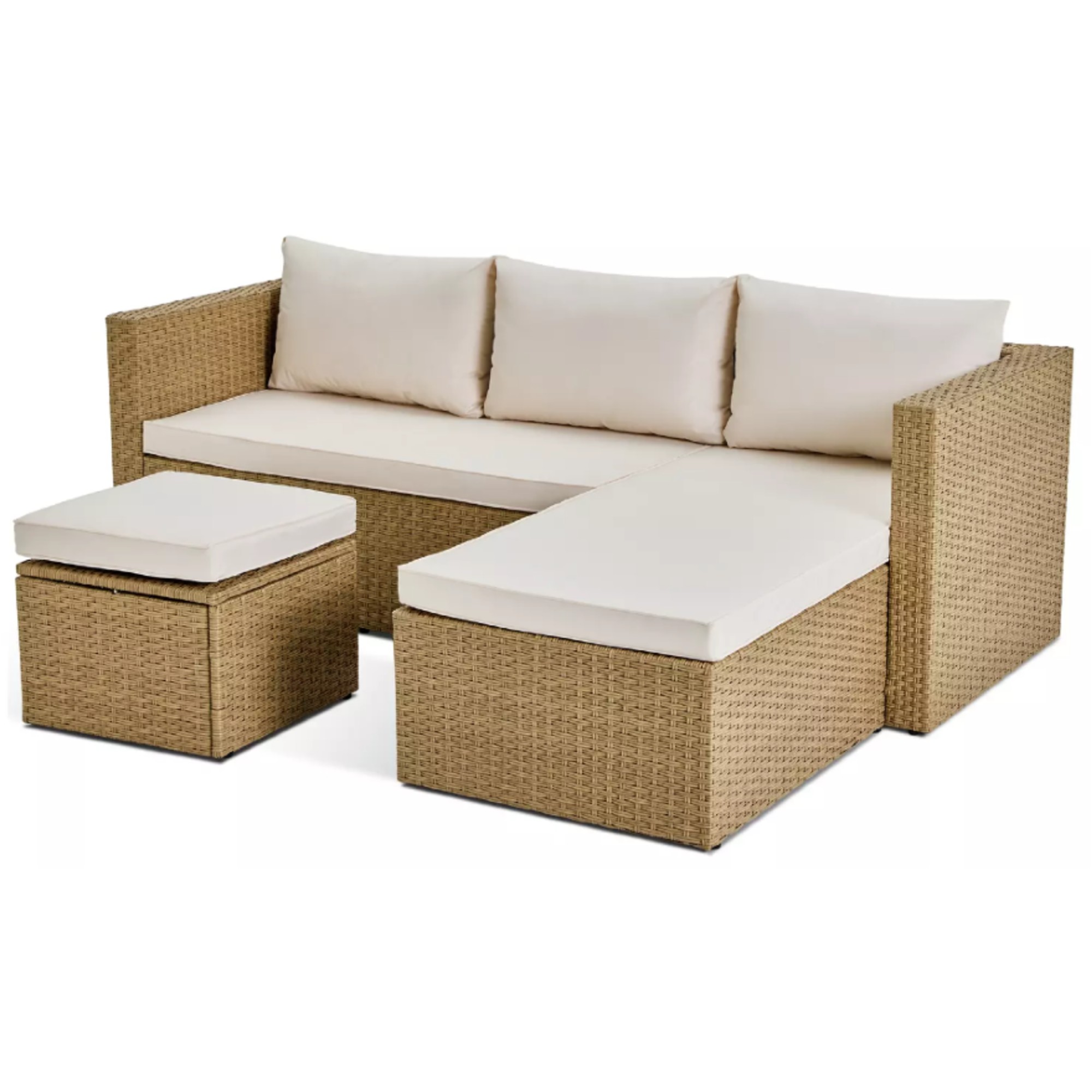How to choose outdoor furniture for your garden or patio – experts reveal the 7 things to look out for when shopping for garden furniture
Experts share the only checklist you'll need when shopping for outdoor furniture


Even if you are a skilled shopper and decorator when it comes to your home’s interiors, deciding on furniture for your garden or patio presents a whole new set of boxes to tick, as well as challenges one needs to be aware of. But our checklist for how to choose outdoor furniture will get you covered.
A new set of dimensions, your style and the outdoor environment and weather conditions that will have an effect on the pieces are just a few factors that you’ll need to consider and which will determine what the best garden furniture for your outdoor space might be.
‘Outdoor furniture is one of the essential investment pieces for our homes,’ says Rikke Blaeside, design and range manager at JYSK. ‘With the variety of designs, features, and styles available, making the right choice that balances cost and style can be challenging.’
How to choose outdoor furniture
As soon as the first signs of sunshine and slightly higher temps make themselves known, our minds turn to our outdoor spaces – and anytime from early spring to the end of summer sales is a great time when to buy garden furniture.
But to choose your garden furniture ideas well, you need to know what to look out for…
1. Consider how you use your outdoor space
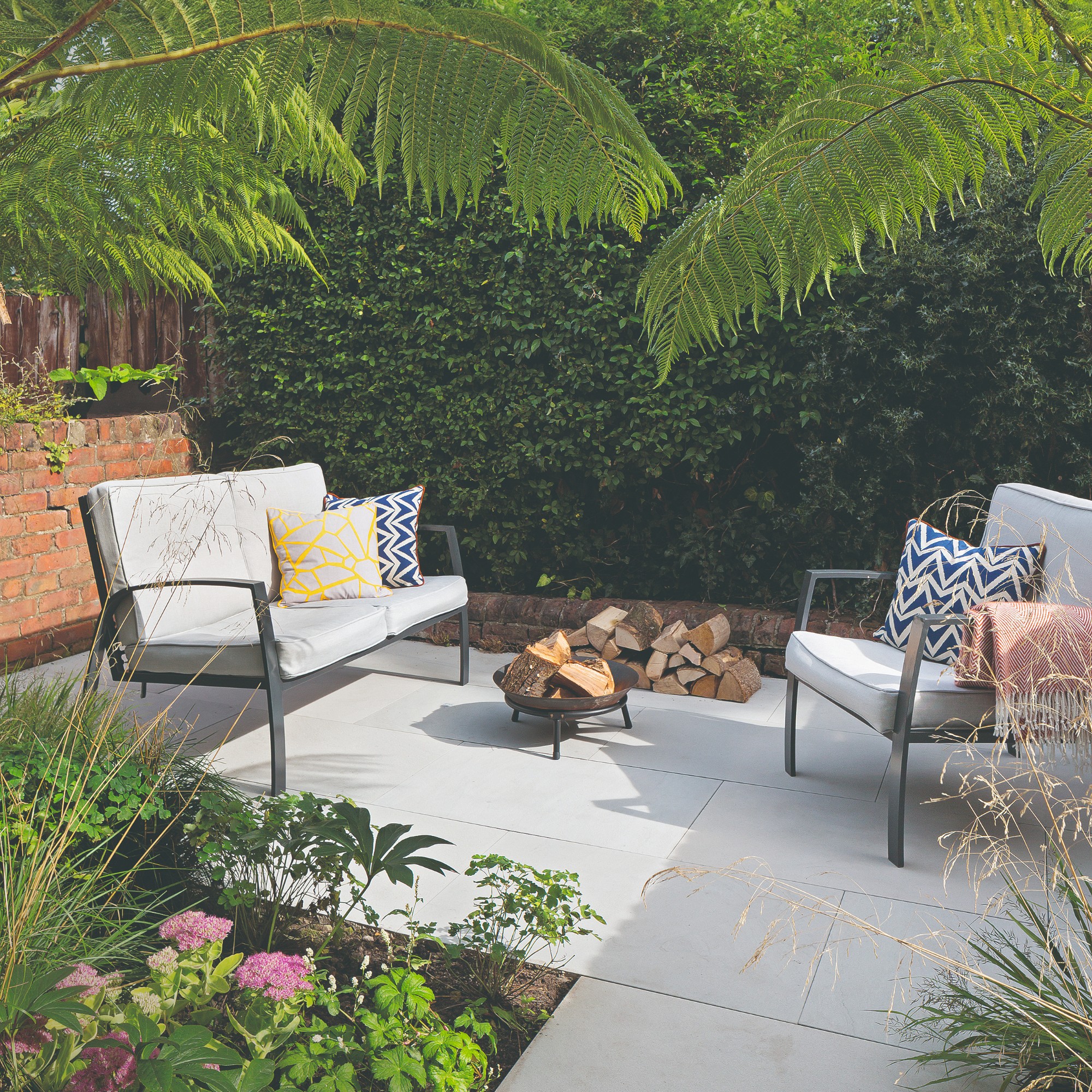
There are so many different types of garden furniture out there, from the best garden benches to full outdoor dining sets. And while it can be easy to simply buy the pieces that pique your interest, it’s important to consider your needs before biting the bullet and buying new outdoor furniture.
‘Choose your seating based on how you want to use your garden,’ says Danielle Le Vaillant, head of photography and film at Cox & Cox. ‘Sociable families will be looking to position as much seating space as possible, so look to larger corner sofa or lounge sets where you can squeeze in a crowd when necessary. For those seeking a secluded spot to take in the view of the garden, think about a bistro set, bench or even a statement or hanging outdoor chair which can become a place of refuge and relaxation.’
Sign up to our newsletter for style inspiration, real homes, project and garden advice and shopping know-how
Yes, if your main aim is to host dinner parties and summer BBQs, opting for smaller bistro sets or larger dining sets would be your best bet. But if you’re just looking to chill out with your friends and family with a drink, a sofa and coffee table or lounge set would suit you better. So, take a moment to consider what you’ll be using your outdoor garden furniture for and go from there.
2. Measure your space
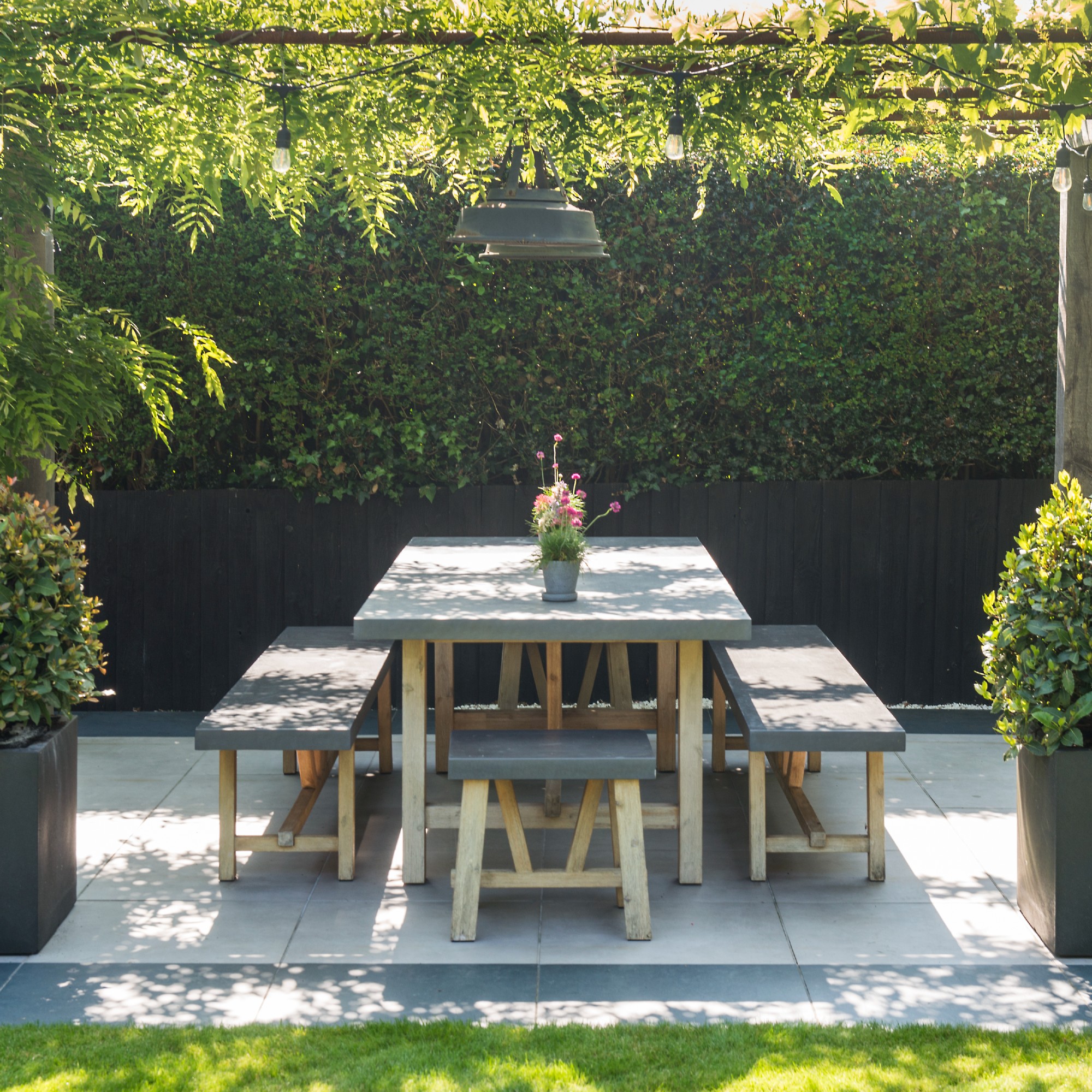
Getting the size and measurements of the space you’re working exactly right applies whether it’s an outdoor space or your living room. But you should also choose the particular design of your garden furniture based on the size of your garden, especially if you’re in need of some small garden ideas.
‘Incorporating furniture pieces that work harder for you makes al fresco hosting a breeze,’ says John Rastall, head of home at DFS. ‘Opt for benches that double up as storage to keep cushions in overnight, or tables that have ice buckets embedded in them – which make the host’s life easier.’
And while the perfect outdoor furniture can make a patio look expensive, be careful not to over or underwhelm a patio area. Remember that less is more. You need space for everyone to be able to be comfortable, but also leave space so that guests can walk around with ease. Corner and L-shaped sofas are a good way of making good use of available space, for example.
3. Decide on a budget

You then need to decide on a budget for your new outdoor furniture depending on how much you can afford to set aside for this investment. With so many affordable high-street options and garden furniture deals out there, it’s easy to pick up a bargain – but you should also proceed with caution when setting a budget that’s too low.
Even if you have the budget for more high-end outdoor pieces, you might still be wondering whether it’s worth it buying expensive garden furniture. And as with a lot of furniture in general, you often get what you pay for when it comes to outdoor furniture, too.
‘Durability, comfort and lasting style are the benchmarks of any good garden furniture and while these attributes might come with a higher price tag, you can be confident that you will be enjoying your choice for many years to come,’ Danielle at Cox & Cox says.
Caron Grant, brand manager at Bridgman, continues, 'Premium furniture is designed to stand the test of time. The materials used in their production are not only sourced more sustainably, but also chosen for their durability, ensuring they last for many years to come. By moving away from fast fashion-esque pieces that you’ll replace much more often, you’ll be contributing to the demand for more environmentally-conscious furniture to be created.’
Of course, we don’t want you to bankrupt yourself in the process of buying new outdoor furniture, but being able to spend a little more on high-quality furniture can actually save you money in the long run as you won’t have to replace it as often.
4. Make sure it’s comfortable
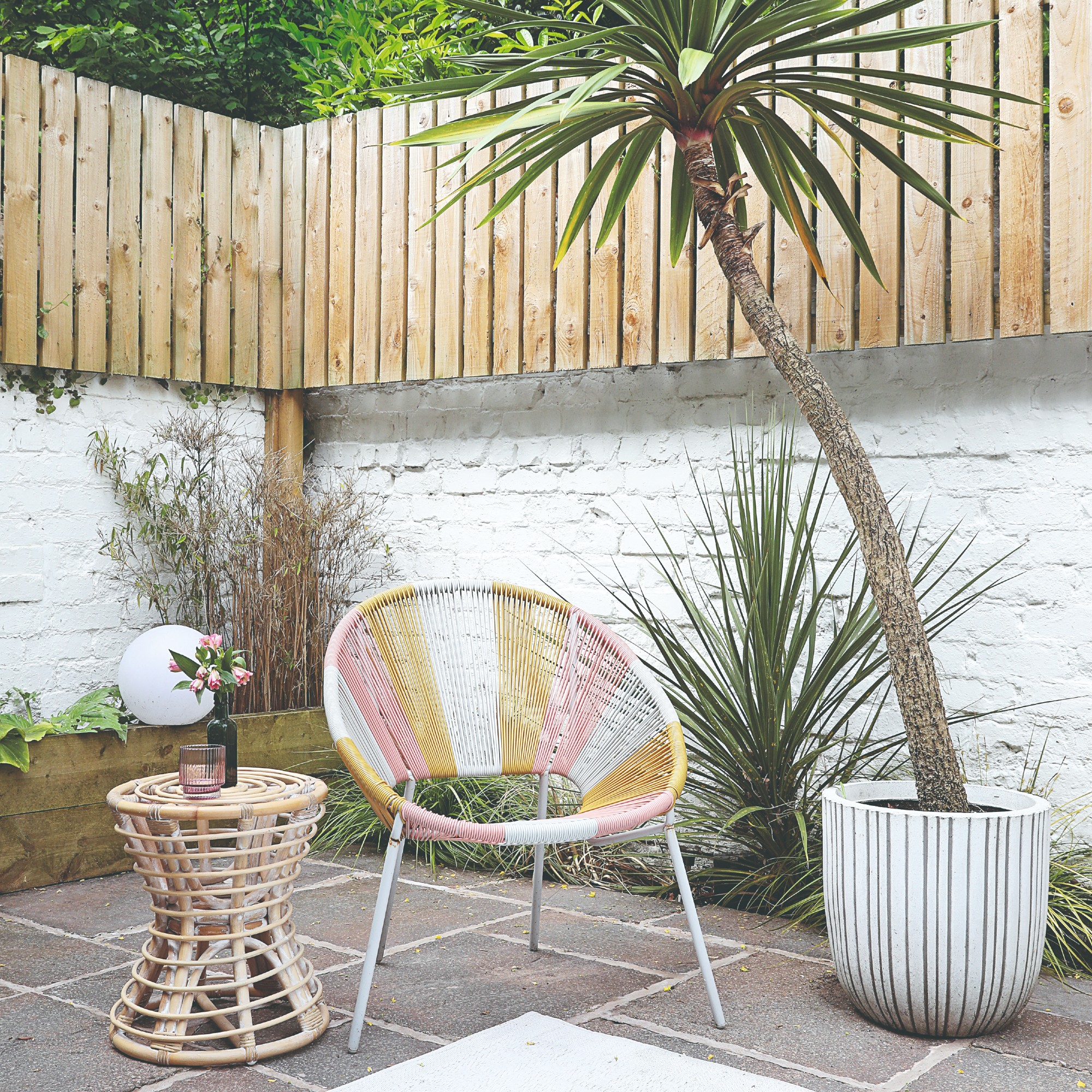
When we at Ideal Home test garden furniture, we always make sure we sit on every possible garden chair and outdoor sofa to make sure it’s as comfortable as any indoor seating. The standard should not be lowered just because the furniture is meant for your garden or patio as you are likely to still spend several hours sitting and relaxing on your garden seating ideas.
‘When you are choosing garden furniture, it’s important to consider functionality as well as form – you want it to look beautiful and feel comfortable, as well as work practically for your space and needs,’ John at DFS says.
Ralph Aspin, head of product development at Kettler, continues, ‘Comfort in garden furniture is all about depth, support, and cushion quality. Look for seating with generous proportions, angled backs, and padded armrests. Lounge sets with deep cushions and wide seating are perfect for unwinding, especially when paired with a high-low table that gives you the option to dine or relax without needing to move to a separate area. It creates a multifunctional outdoor space that feels as comfortable as your living room.’
Finally, Matt Baldock, senior buyer at Garden Trading, adds one more recommendation, ‘Outdoor lounging will provide the most comfort for outdoor seating, such as a corner sofa or armchair. As these come with seat pads and cushions it means you can put your feet up and relax.’
5. Find the right style
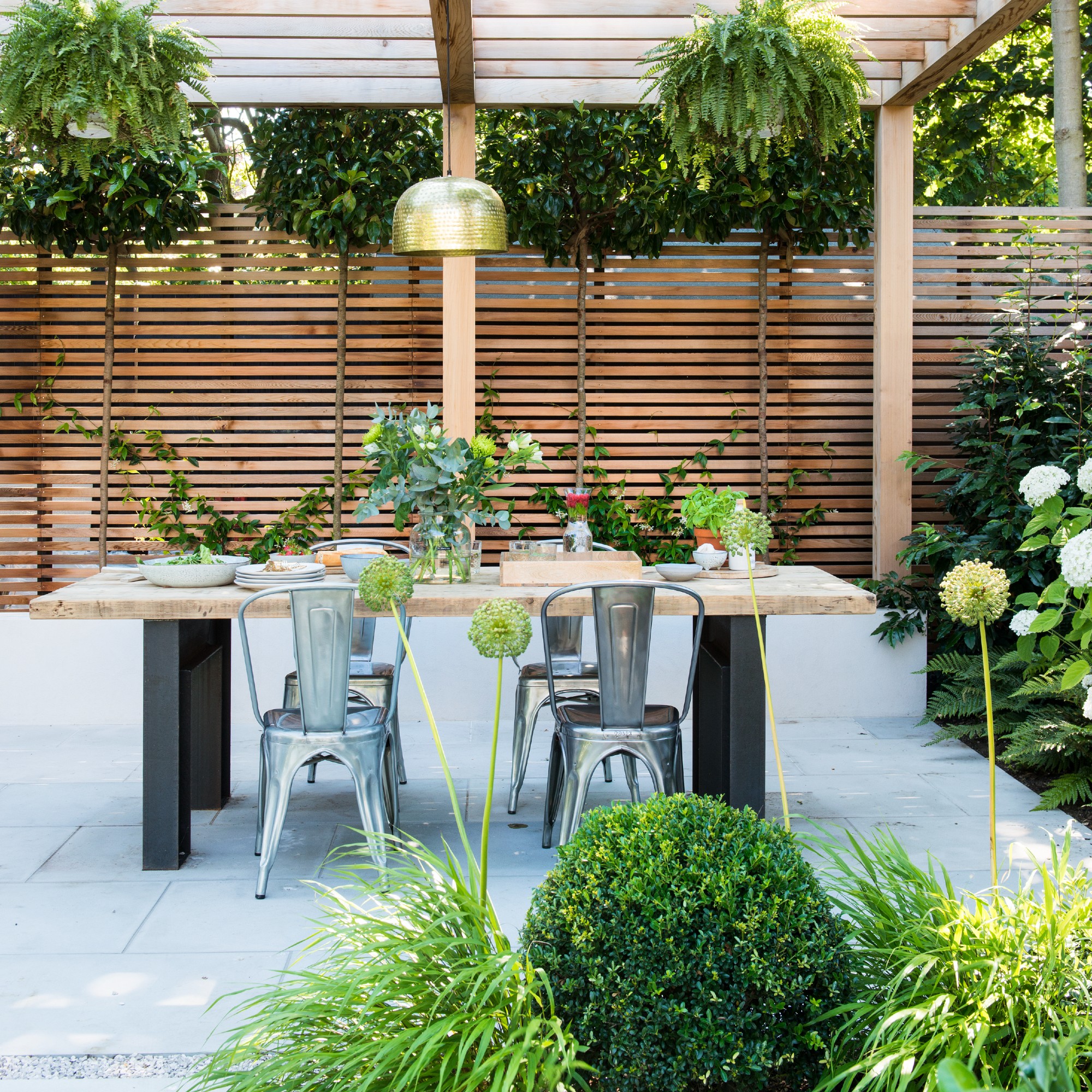
As with interiors, it’s important to consider the environment when buying furniture. A useful place to start is by deciding whether you want your garden furniture to complement or contrast with your home.
‘If you live in a very modern house, you might go for furniture with lots of minimalist lines or contrast with furniture that provides a cosy and comfy ambience,’ says Simon Hudson, managing director of Oxley’s.
For a more cohesive feel, stick with furniture that reflects your home and the garden. ‘A traditional property with a classically designed garden would suit 19th century or early 20th century garden antique furniture,’ notes Caryl Tincknell, founder of Violet Grey. ‘A contemporary property and garden would be better suited to mid-century items. You can get a real sense of the history of a garden and work in pieces from there.’
Style also dictates material choice to an extent. ‘It’s best to consider the overall look you want to achieve and how you’re planning to use your outdoor space,’ advises Jonny Brierley, CEO of Moda Furnishings. ‘Aluminium is best for those wanting to achieve a contemporary look, whereas rattan is perfect for achieving a more traditional style.’
6. Choose the right material
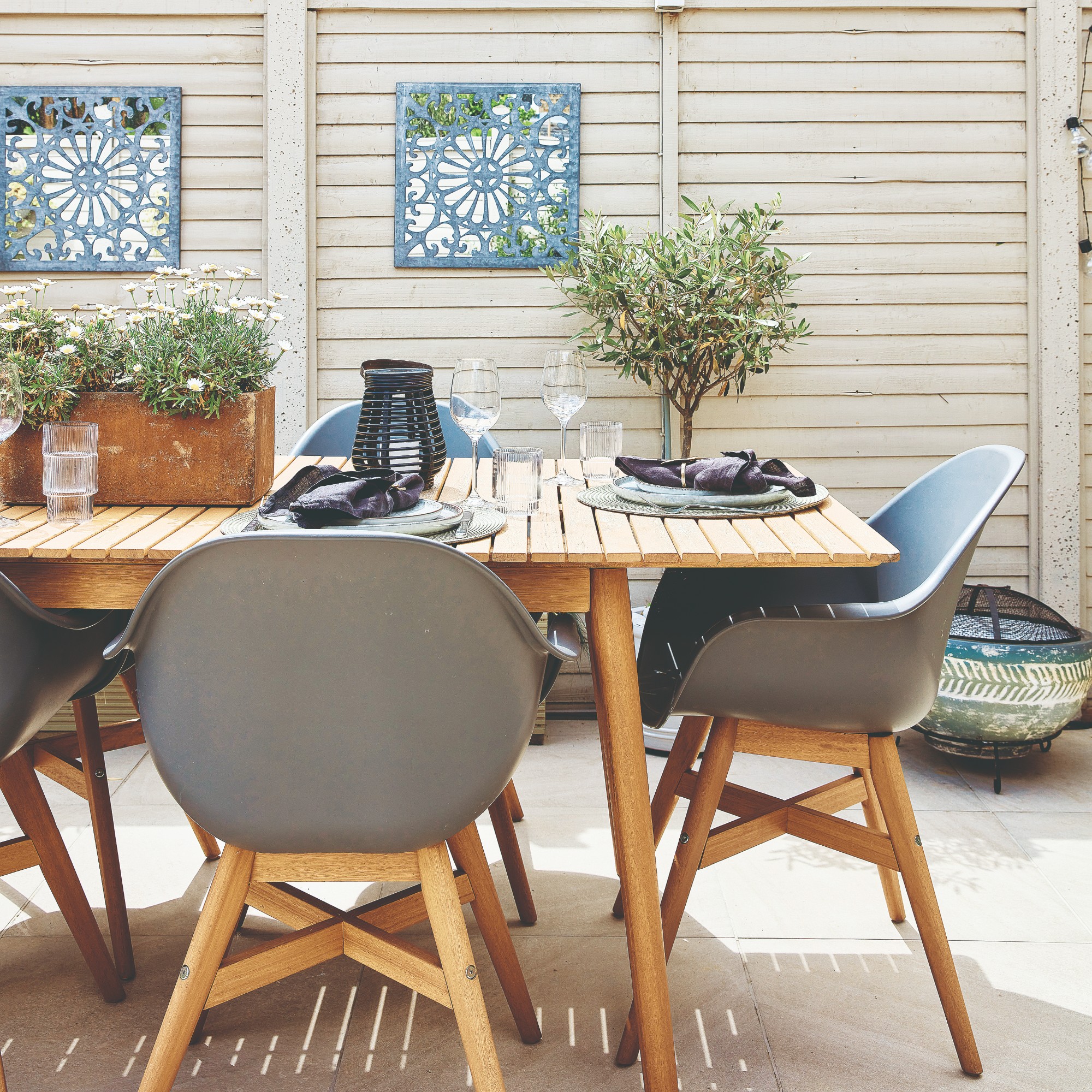
Speaking of materials, one of the most confusing aspects of choosing outdoor furniture is the wide range of materials it comes in available on the market. It can be tricky to know which is best for your needs and which material is more durable, but each has pros and cons to consider. Here, we’ve listed some of the best garden furniture materials to go for:
Rattan: 'Rattan is a staple garden furniture material we see year after year because it truly is one of the best for withstanding the UK weather,' says Chloe Barrow, interior expert at Laura James. 'It’s sturdy enough not to tear in strong winds, water-resistant for rainy days, and doesn’t tend to fade when consistently exposed to sun. This is why it’s one of the most common choices on the garden furniture market in Britain.'
Alex Bridgman, CEO of Bridgman, adds, 'More durable than its natural counterpart, synthetic rattan is the most popular material for garden furniture.'
Wood: The best wooden furniture is often considered to be the most traditional and classic option. As well as one of the best. 'Eucalyptus wood is a strong tropical hardwood that is naturally weather-resistant due to its high oil content. Acacia wood styles should have been treated with a PU sealer and an acrylic topcoat so you do not need to treat the acacia elements before use. After two years or so all hardwoods will naturally age gracefully to a more silver-grey tone,' Danielle at Cox & Cox says.
Rikke at JYSK adds, 'Hardwood is a timeless, classic, and eternally popular material choice for garden furniture. Teak is a highly coveted hardwood choice for garden furniture, it has a beautiful, warm, and rich appearance, and as it weathers over time, it develops an attractive silver-grey patina if left untreated. Due to its high oil content, the hardwood is highly durable and naturally resistant to deterioration, insect damage, moisture damage, and weathering.'
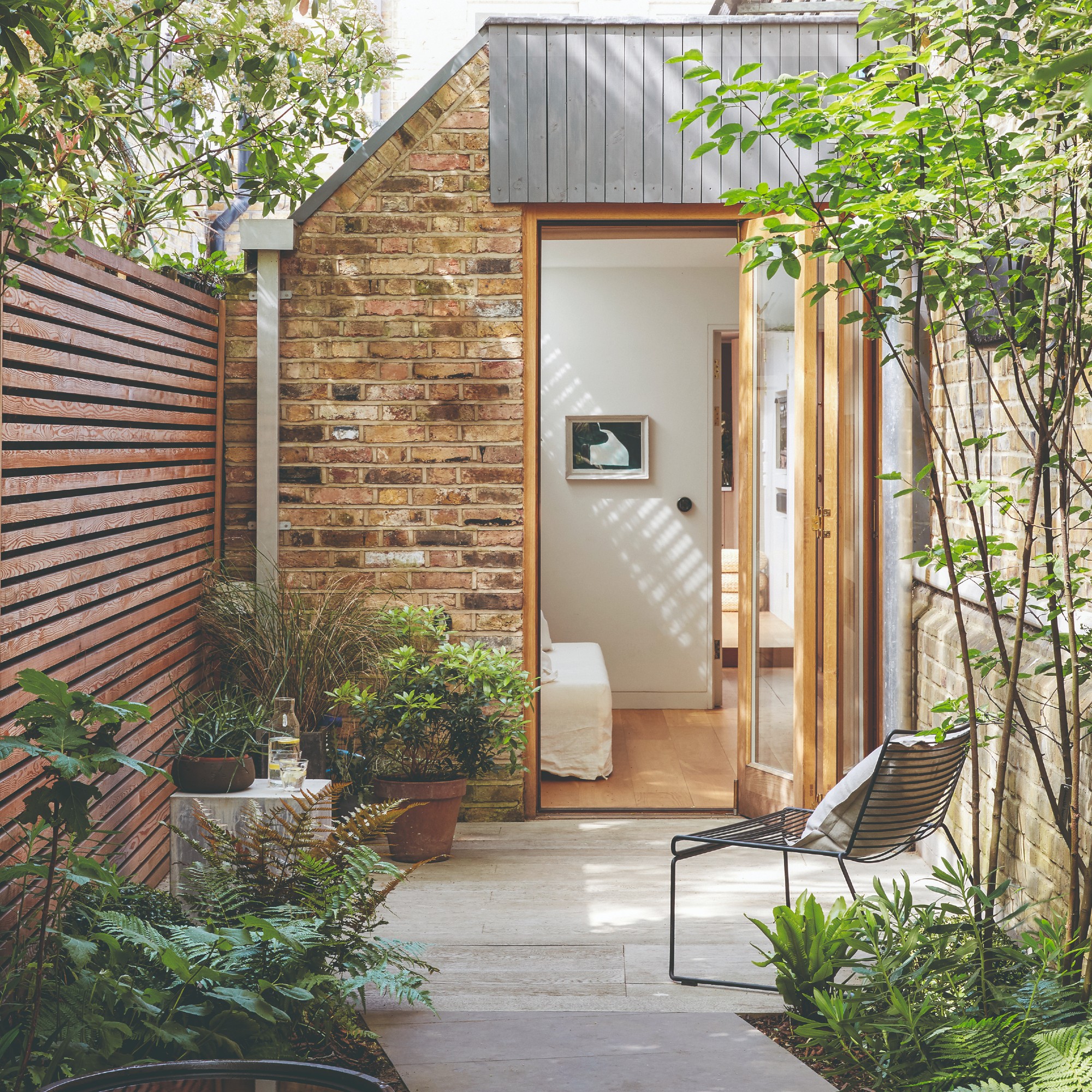
Metal: Aluminium and steel are the two most widely used materials for metal outdoor furniture. The latter, although more traditional, has more potential issues. ‘Steel is extremely robust and can look stunning in a minimalist setting,’ says Simon from Oxley’s. 'But it is very heavy and, as a ferrous metal, will eventually rust.’
For these reasons, aluminium is a safer but a pricier choice. ‘Aluminium furniture is likely to be favoured by those who prefer a more contemporary look to their outdoor space. There is a wide choice of styles available with frames and cushions in a variety of colours,’ says Tim Penell, head of sales and marketing at Bramblecrest. ‘Aluminium furniture is lightweight, rust-free and easy to maintain.’
Rope: 'Woven rope designs are easy to live with, usually being made from strong, low-maintenance and water-repellent marine-grade rope,' Danielle at Cox & Cox says.
Alex at Bridgman continues, 'Rope furniture is a relatively new material for garden furniture. Bringing a natural infusion to outdoor spaces, this versatile material will suit a range of schemes. Benefitting from a powder-coated aluminium or steel frame, our rope furniture ensures absolute rust-resistance and year-round protection.'
For some inspiration, the garden furniture below is all made with recommended materials.
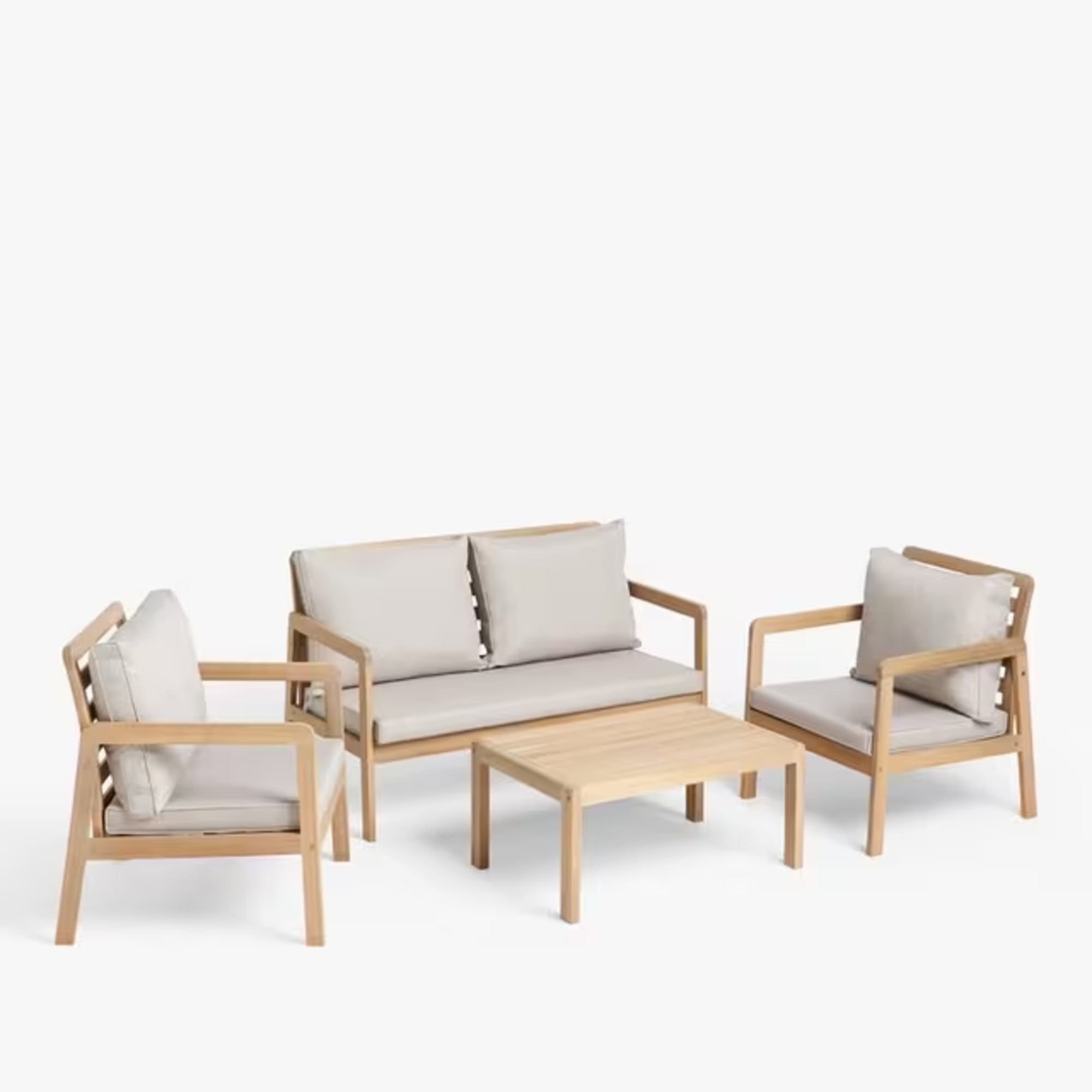
Acacia wood - which this lounge set is made of - is one of the best hardwoods for garden furniture you could invest in alongside teak and eucalyptus wood. And given the size of the set, the asking price of £549 is very reasonable which is why it's one of the retailer's bestsellers.
7. Think about maintenance
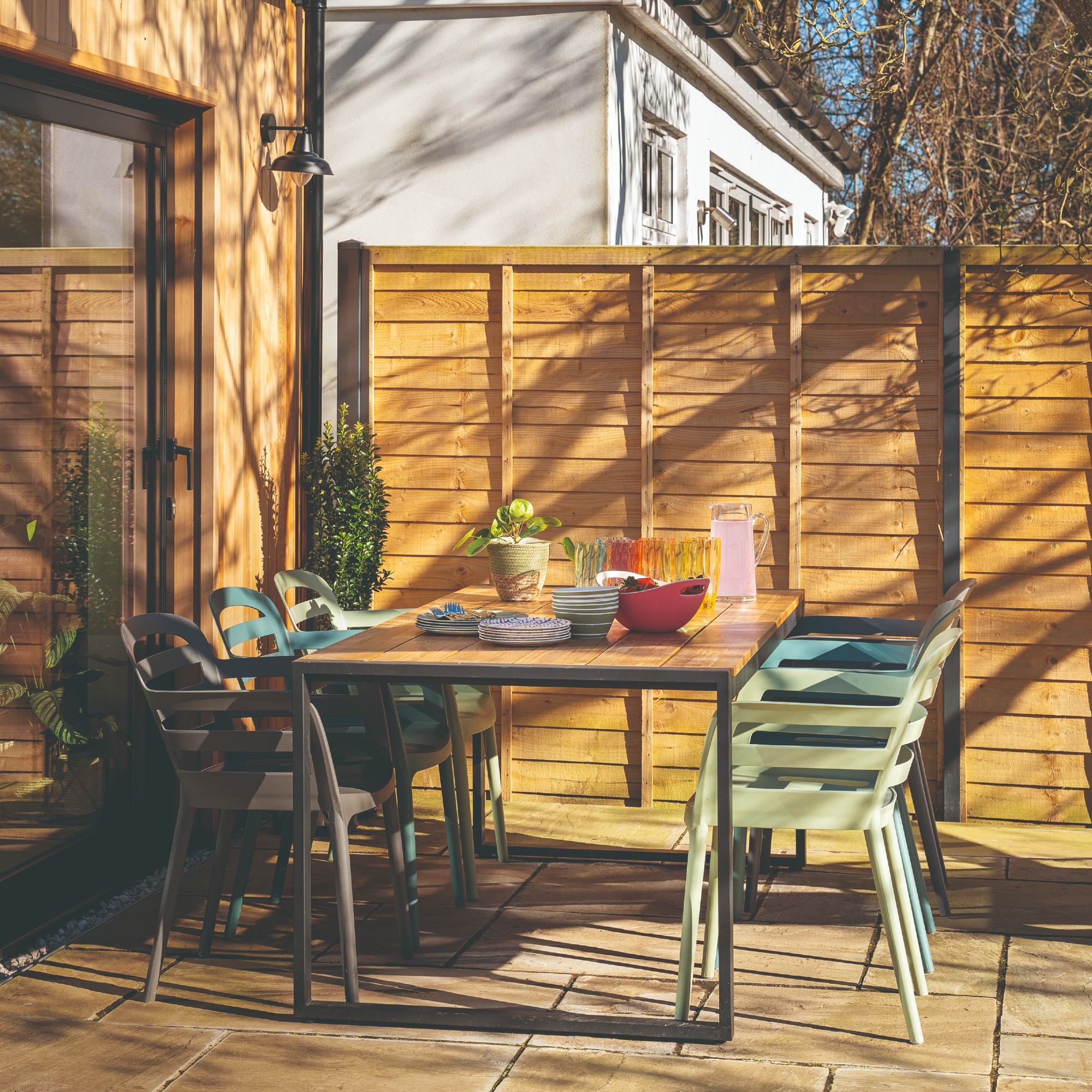
When you buy outdoor garden furniture, you also need to accept that this garden furniture requires maintenance and upkeep. That’s why knowing how to clean garden furniture is key, and why you should always consider using outdoor furniture covers.
Because of this, you should also make sure to choose garden furniture that works with the level of maintenance that you’re realistically able - or willing - to provide. It’s essential to research how your choice of furniture needs to be cleaned, and how it should be stored when not in use.
‘During periods of non-use, we suggest that furniture is covered to protect from garden debris and to keep the furniture clean,’ advises Tim from Bramblecrest. ‘We also recommend that cushions are removed to a dry garage, outbuilding or loft space. If that’s not possible, cover your furniture with the cushions on but check weekly to prevent a build-up of condensation.’
FAQs
What kind of outdoor furniture holds up the best?
Most experts agree that hardwood outdoor furniture and aluminium garden furniture hold up the best in the garden.
'Powder-coated aluminium is one of the most durable choices out there,' says Ralph Aspin, head of product development at Kettler. 'It’s rustproof, lightweight, and handles the elements with minimal maintenance.'
Matt Baldock, senior buyer at Garden Trading, continues, 'Teak is the best wood to use for outdoor furniture. Due to the natural oils inside the wood, it is very water repellent and therefore has an incredibly high resistance to rot. It also has a very low risk of warping or cracking when exposed to different weather conditions. It starts life in a warm brown finish which can be retained through oiling and maintenance, or if you prefer you can let it age naturally where it will eventually turn to a beautiful grey finish. Teak is on the higher end of pricing, so as a more cost-effective alternative Acacia Wood is also a very good option with similar qualities to teak.'
What is the first thing you should consider when selecting patio furniture?
The size of your patio is the first thing that you should consider. After all, there’s no pointin buying new patio furniture that is too big or too small for your space.
So, it’s always a good idea to measure your patio and decide, realistically, how much of that space you want to fill with garden furniture. When you’ve done that, you then need to consider what you’ll use the furniture for - lounging around or outdoor dining?
Now you know how to choose garden furniture, it’s time to start shopping!

Thea Babington-Stitt is the Assistant Editor for Ideal Home. Thea has been working across some of the UK’s leading interiors titles for nearly 10 years.
She started working on these magazines and websites after graduating from City University London with a Masters in Magazine Journalism. Before moving to Ideal Home, Thea was News and Features Editor at Homes & Gardens, LivingEtc and Country Homes & Interiors.
- Lauren BradburyContent Editor (House Manual)
- Sara HesikovaContent Editor

